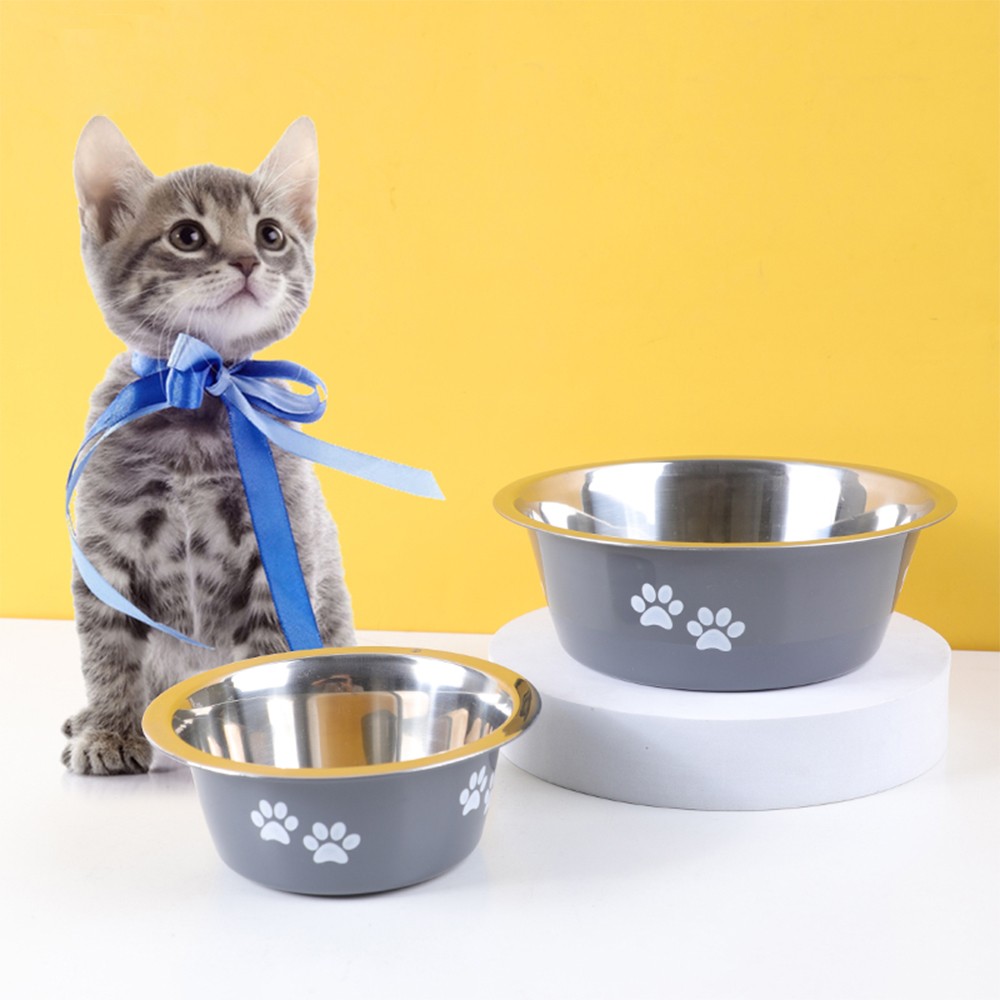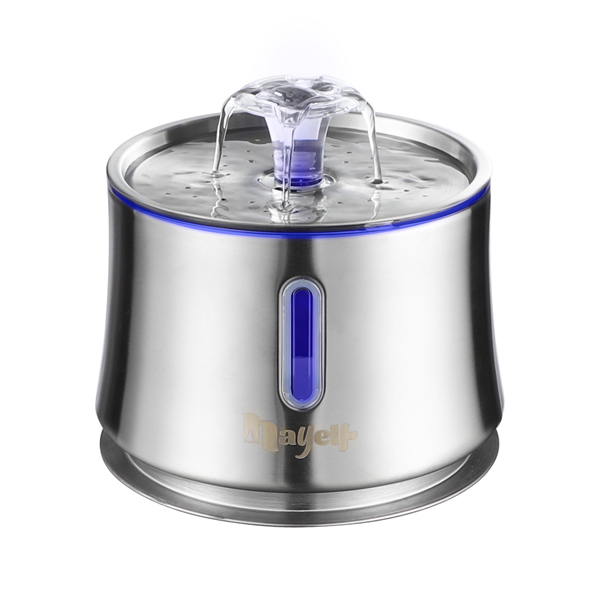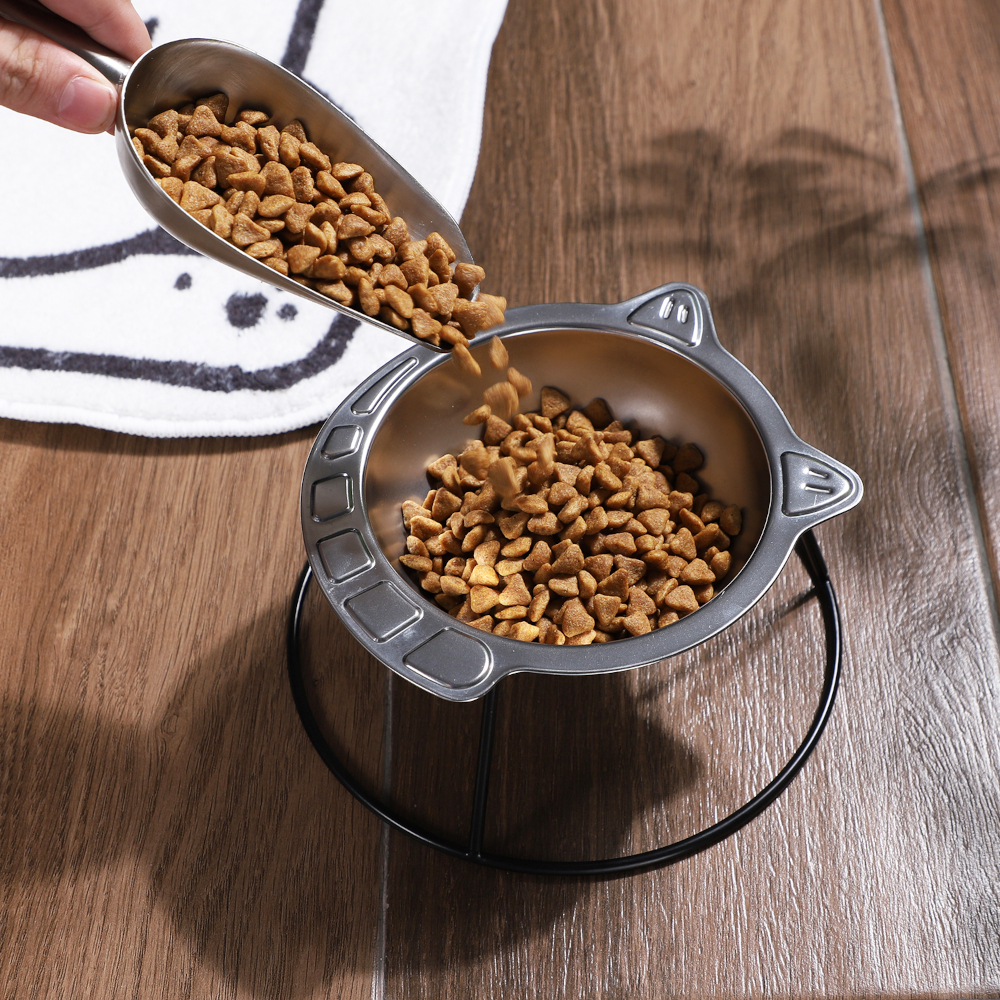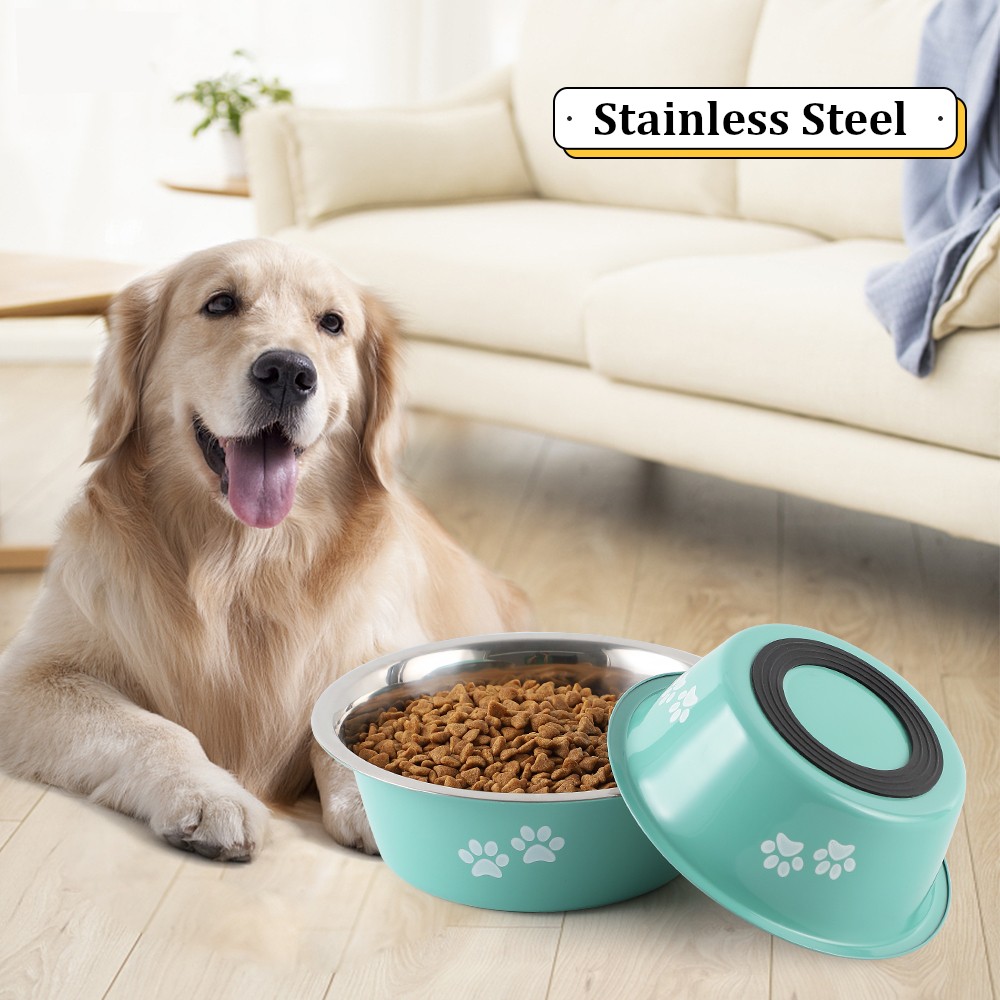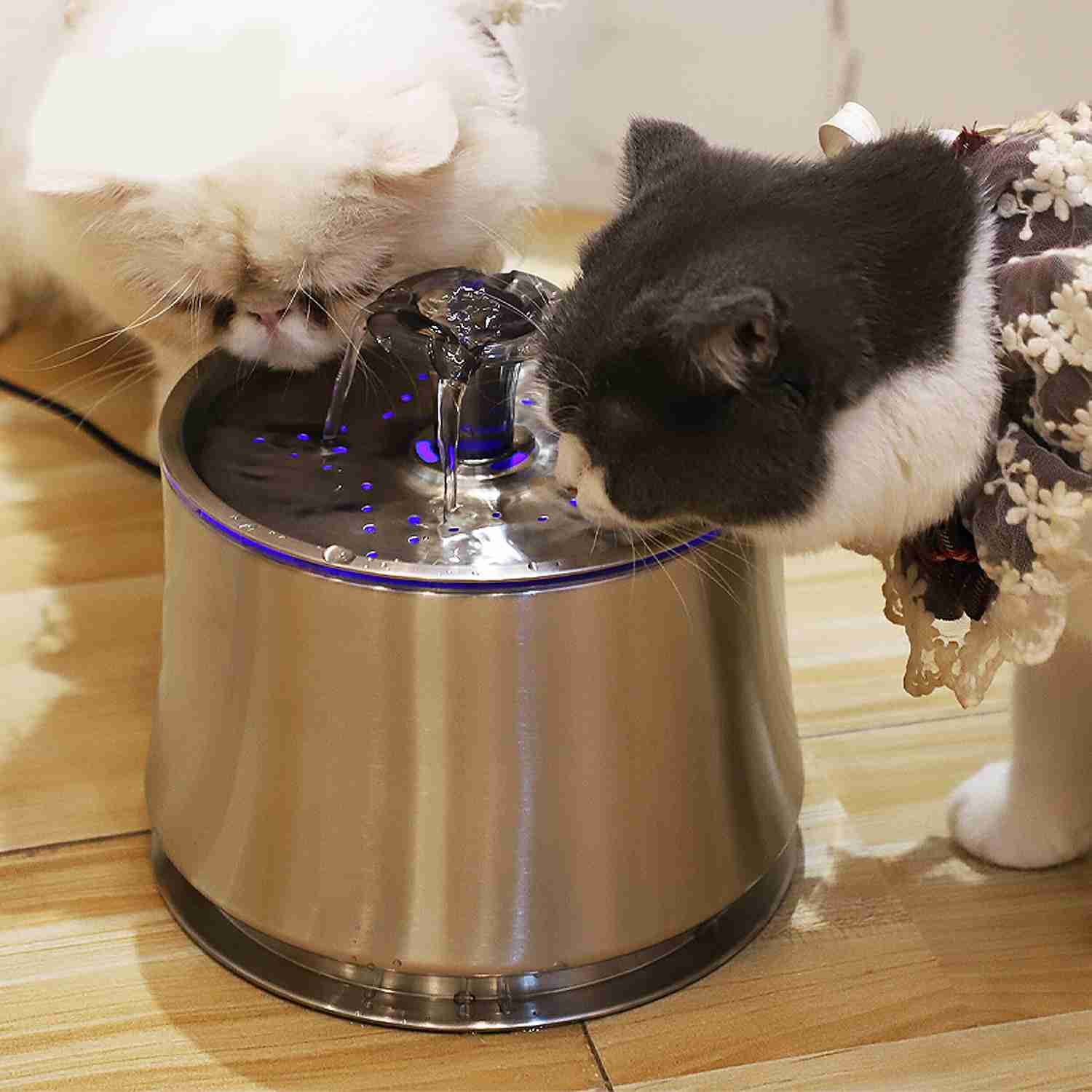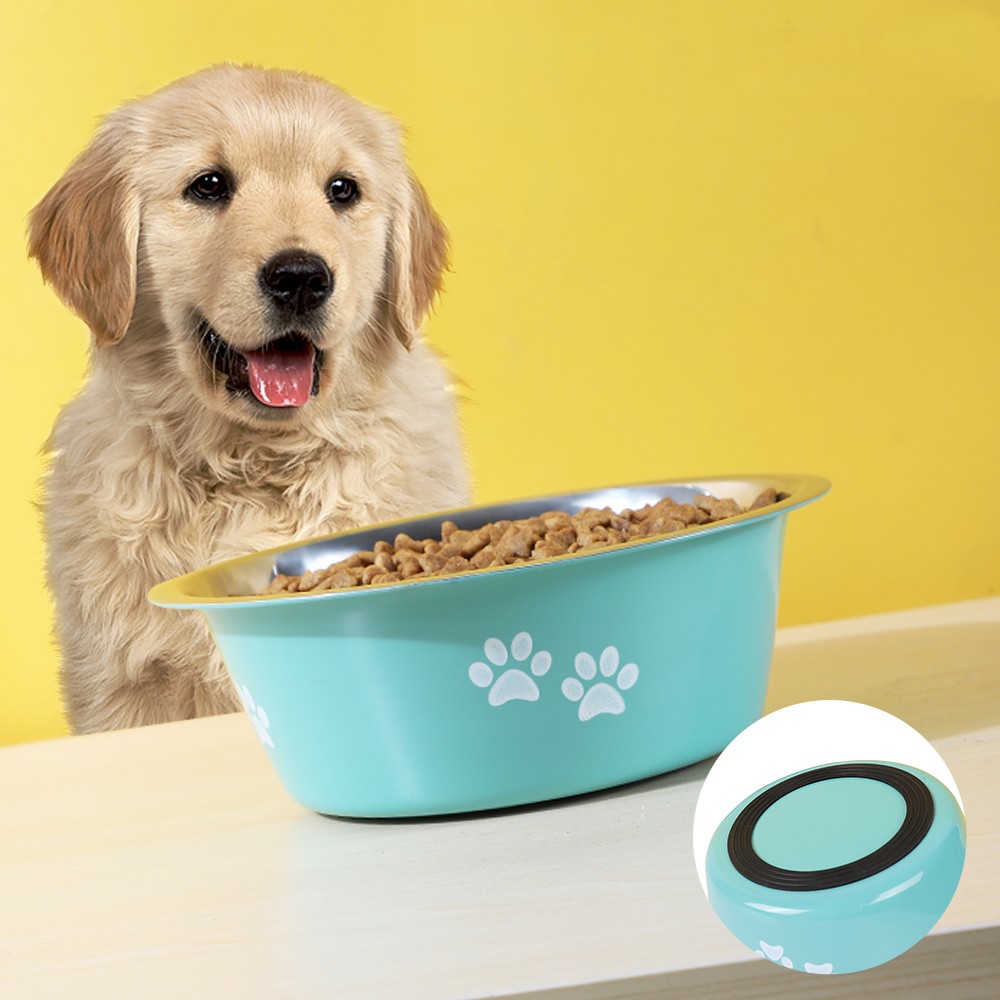Stainless steel is not an excellent choice for a lunchbox material that requires one that can be heated in the microwave. This article will discuss whether square steel tiffin boxes can be heated in a microwave oven. It will also introduce the best microwave-safe material for microwavable bento boxes.
Can We Put Stainless Steel Lunch Box in Microwave
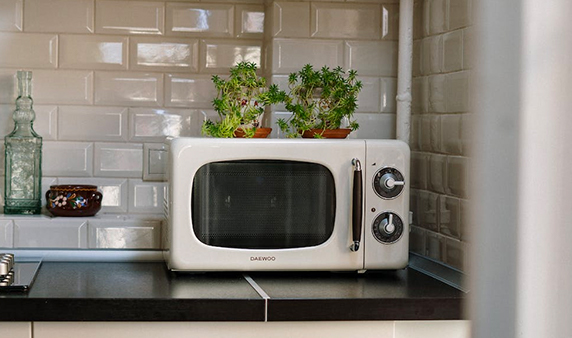
Using a microwave to heat food in stainless steel lunchboxes is unsafe. It is not recommended to reheat one’s food using stainless steel in the microwave. Using stainless steel containers in the microwave could cause sparks and arcs on the lunchbox. Consumers should consider them even if arching and sparking aren’t particularly important. When not careful, the microwave could be damaged by stainless steel bowls or lunchboxes, and in the worst-case scenario, a fire could break out.
What Happens When a Stainless Steel Lunch Box is Microwaved?
Consumers should not microwave a stainless steel lunchbox because heat waves cannot pass through the metal surface. This means that the food in the box will take longer to heat up than usual.
Microwave electromagnetic waves cannot penetrate thick metals such as stainless steel due to their density. The microwave magnetron’s magnetic field reacts with the stainless steel. As a result, the electromagnetic waves reflect or return, leaving an electric discharge coating on the surface of the stainless steel lunchbox.
This is what caused the spark within the microwave. The damage caused by frequent arcing and sparking will likely cause one’s microwave to stop working. Because microwaves cannot pass through stainless steel, the lunchbox will grow so hot that picking it up will burn one’s hand.
Is 304 Stainless Steel Microwave Safe?
No, the 304 stainless steel lunch box is not microwave-safe. In reality, the most common material containing both chromium and nickel is grade 304 stainless steel. 304 stainless steel is accessible in a supplier of steel tiffin box wholesale on the market now, which is typically found in kitchenware and food processing equipment.
304 stainless steel lunch box is widely used because of its strong heat resistance and good corrosion resistance, although it cannot be used in a microwave. 304 stainless steel is excellent for food preparation, storage, and eating rather than reheating, cooking, or defrosting food in the microwave. Moreover, this kind of product is available in a manufacturer of stainless steel food containers wholesale.
It is widely used because of its strong heat resistance and good corrosion resistance, although it cannot be used in a microwave. 304 stainless steel is excellent for food preparation, storage, and eating rather than reheating, cooking, or defrosting food in the microwave.
How Does a Microwave Function?
When it comes to microwaves, radiation is commonly brought up. But how does the microwave works? A magnetron generates microwave radiation in a standard microwave oven, which is then guided into the cooking chamber by a waveguide. A microwave cooks food by rotating molecules, which produce frictional energy, which is then turned into heat. The heat is then distributed evenly by convection. The confusion originates from the fact that this approach heats food interiors much faster than an oven. This is without browning or burning the outside.
Microwaves, in general, work by activating water molecules in food, resulting in friction and heat. Microwaves circulate within the chamber and are absorbed by the food placed inside. This causes the water molecules in the meal to vibrate, generating heat. As a result, because heat is not delivered through direct touch, plastic, ceramic, metal, and glass do not absorb it.
When a microwave oven cannot transmit microwaves to the center of the food, massive chunks of meat or heaps of pasta with sauce, the food will be heated unevenly.
How Does a Microwave-Heated Stainless Steel Lunch Box React?
It is possible to harm the microwave by microwaving a stainless steel lunchbox. Microwaving stainless steel dishes or lunchboxes might be a fire hazard. Here are some possible outcomes:
- A fire could start if the oven is left on with flammable items inside. This is especially true for stainless steel lunchboxes that contain oil and wax.
- Sparks can permanently damage the microwave and cause it to fail.
- Stainless steel lunch containers will be destroyed by microwaves.
What Kind of Lunch Box Are Microwave Safe
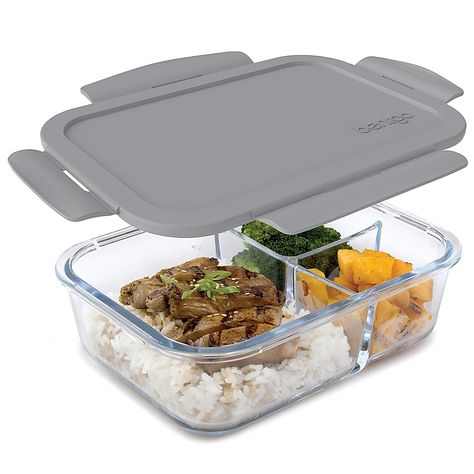
Insulated Glass Lunch Box
Borosilicate glass, glass-ceramic, and titanium oxide crystal glass are the types of food containers that fall under this category. Because of the physical and chemical characteristics of each of these substances, which of them could heat in a microwave for an extended period?
Heat-resistant glassware can also withstand temperature differences between cold and hot fusion. Low expansion, thermal shock resilience, high temperature, corrosion resistance, and high strength. The thermal expansion coefficient (the ratio of glass body expansion due to temperature increase) is relatively low and not easily damaged by rapid temperature changes.
These are just a few of this material’s many excellent properties. Because the thermal expansion coefficient is low, the resistance range to rapid temperature changes is wide (120 celsius), and the maximum heat resistance temperature is 1200 Celsius. There will never be a self-explosion event equivalent to that of tempered glass. This is because the maximum heat resistance temperature is 1200 Celsius.
Ceramic Box Lunch Container
Two kinds of ceramic can be used to make lunch boxes: heat-resistant and conventional. Conventional ceramic lunch boxes can only be used in s short periods of heating. However, ceramic lunch boxes constructed of heat-resistant ceramics can be used in microwave ovens for extended lengths of time.
Porcelain intended for daily use has its drawbacks. The product has a weak ability to withstand impacts. It does not resist falling, can be broken easily, and is fragile.
Lunch Box Made of Plastic
When it comes to heating meals in the little oven, plastic is a terrible choice. There is, however, a plastic category from which to choose a lunchbox. What is it?
- High-density polyethylene plastic, or HDPE, is suitable for microwave-safe containers. They are highly durable and resistant to deterioration.
- Polypropylene plastic, often known as PP, has a temperature tolerance of more than 200 degrees Celsius. Because of its low weight and excellent efficiency, it is the most commonly used material for containers, particularly those from healthy lunches.
- Molded fiber from bagasse, this material is safe to consume and can be used in the microwave at temperatures up to 250 degrees Fahrenheit.
Plastic, a polymer made from petroleum that can contain chemicals that mimic estrogen, like bisphenol-A, is bad for one’s health and should be avoided. Even plastics that do not have BPA threaten human health because BPA is often replaced with BPS (bisphenol substitution). This chemical behaves similarly to hormones but is more hazardous to human health.
Moreover, customers are required to select a container with a triangular pattern on the bottom in addition to the words “Microwave Safe” or other phrases of a similar nature.
On the other hand, polypropylene plastic products have poor cold resistance and limited impact strength at low temperatures. Products deteriorate due to exposure to light, heat, and oxygen while in use.
Wooden, Paper, and Other Material Lunch Boxes
This wet lunch container can be heated briefly in a microwave oven. However, if heated for an extended period, the lunch box will dry out and become combustible.
Lunch boxes that have been painted are not suitable for microwave ovens. This is because the paint contains benzene, which can contaminate food. Consumers should choose a glass or ceramic microwave lunch box to live a safe and healthy lifestyle.
If I Want to Heat Stainless Steel Lunch Box, What Should I Do
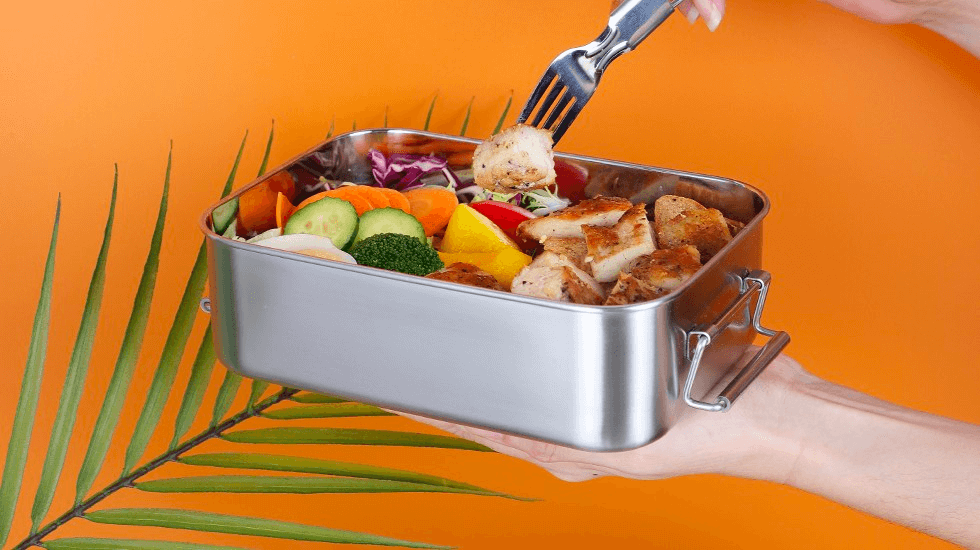
Don’t put the stainless steel lunchbox in the microwave as this will cause damage to one’s microwave. On the other hand, the food inside a lunchbox made of stainless steel will heat up much more slowly since microwaves cannot pass through the material, wasting both time and energy.
Microwaving food in stainless steel is not only dangerous, but it also has the potential to change the flavor and consistency of the meal. We will discuss the risks associated with utilising stainless steel in the microwave.
Whether cooking something or just reheating something that is already cooked. Follow the tips below on how to reheat the food in a stainless steel lunch box without using the microwave.
Tips On How To Reheat a Stainless Steel Container Without Using a Microwave
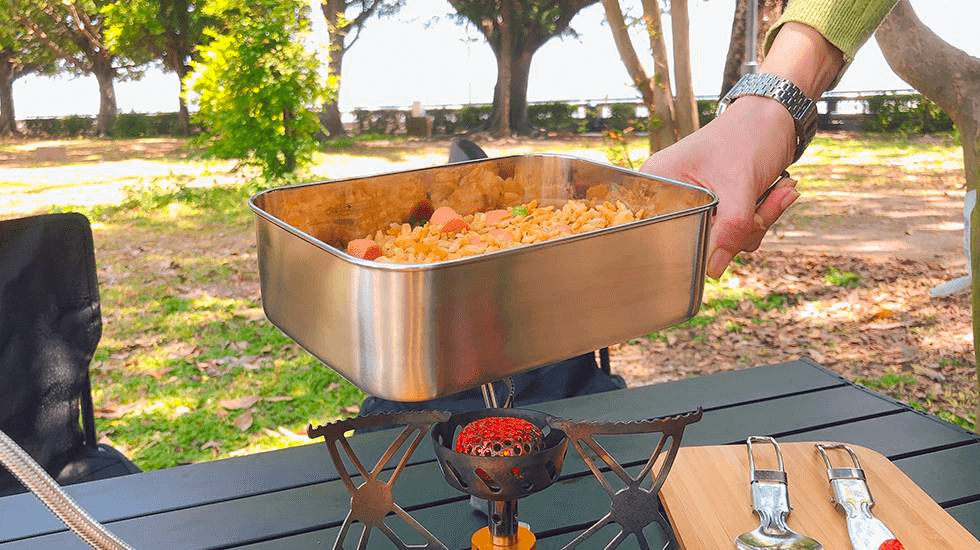
It is unsafe to heat food in containers made of stainless steel in the microwave. It is essential to note that there is a wide variety of alternatives to heating food in the microwave.
Always use an oven mitt when dealing with hot metal containers.
Convection Oven
A convection oven pumps hot air around the food, allowing it to cook more evenly and often than a regular oven. Cooking food in a stainless steel container in a convection oven is a quick and efficient approach.
Hot air travels around the food, evenly frying it on all sides. Stainless steel is an excellent cooking material since it does not absorb flavors or odors and heats evenly.
Instant Pot
To begin using an Instant Pot, place a metal lunchbox containing food into the pot. Lower the stainless steel container into the pot using an attached silicone sling. Use the Slow Cook or Keep Warm settings when not in a rush and want to slowly cook one’s food.
When reheating meals quickly, use the Steam mode. Water is necessary in both cases to generate steam.
As a result, before beginning, add at least one cup of water to the insert pot of one’s instant pot. When the food is ready, remove the stainless steel container from the pot using the sling accessory’s handles.
Toaster Oven and Conventional Oven
A toaster oven is a fantastic substitute for a microwave, especially in the office. When determining whether to heat food in a stainless steel container in a standard oven or a toaster oven, there are several factors to consider.
The size of the container is critical. Smaller containers may be better suited for a toaster oven because they heat the food faster. The distribution of heat should also be examined.
A conventional oven will generally provide more even heating since hot air circulates around the meal. A toaster oven may be preferable when simply needing to heat a small amount of food because the heat is more focused and hence more effective.
Take into account how well the stainless steel container is insulated. A toaster oven may be preferred if the oven is not well-insulated because heat will be less likely to escape.
Stovetop
A cooktop is a wonderful tool for swiftly and evenly preparing dishes. Stainless steel containers are ideal for this type of cooking since they are easy to clean and efficiently conduct heat.
When heating food on the stovetop, add a splash of water for moisture and a lid to add steam. The food will be hot in about 5 minutes. Use a suitable temperature to keep the food from burning or even sticking to the bottom of the pan. Stainless steel lunch boxes won’t tear or rip like paper and won’t crack or break like plastic. Stainless steel lunch boxes, in addition to being reusable, are more environmentally friendly than disposable choices. Consumers can purchase it from a steel lunch box manufacturer.
Conclusion
Metal reflects microwaves rather than absorbing them during microwave defrosting, frying, or reheating. As a result, situations that pose a danger of fire or sparking may occur. Keep in mind that, when appropriately used, glass and ceramic lunch boxes may be microwaved safely, whereas stainless steel cannot.
Though stainless steel lunch boxes couldn’t be heated in the microwave, there are still other alternatives to heat them. Compared with other materials, stainless steel lunch boxes still have many competitive advantages. (Learn: Ceramic vs Stainless Steel Dog Bowls)
If you are building a business in stainless steel lunch boxes, forming a partnership with Nicety stainless tiffin box manufacturer is a viable option. They offer a wide range of products available for customization. This means that start-ups will have a much easier time getting off the ground with the help of the company’s professionals. Get in touch to cooperate with Nicely right away.

